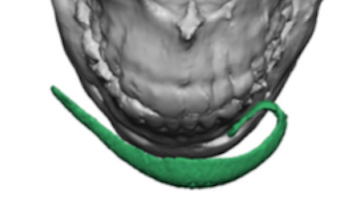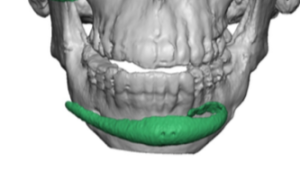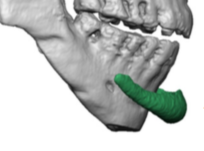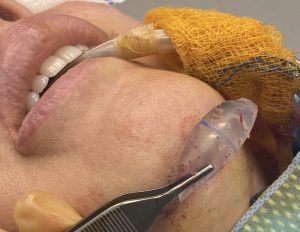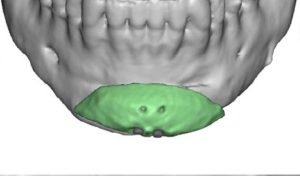Background: Chin implants are typically perceived as a ‘simple’ procedure that is easy to do with a high rate of success. The reality of chin augmentation is, however, far different. While the implant is responsible for creating the effect the preoperative implant style and size selection as well as its surgical placement determines its success. That leaves many variables by which a less than desirable aesthetic outcome can occur. Most chin implant surgeries are technically successful (an implant has been placed somewhere on the bone and has healed without infection….but that doesn’t make it an aesthetic success.
One of the innovations in chin implant design over the past quarter century has been the concept of extended or long winged chin implants. The concept was an innovation as it allowed a chin implant to been in more naturally along the sides of the chin into the more posterior jawline. But with these extensions come two potential problems. The longer the side to side length of the chin implant the more likely that any central axis rotation of its placement will result in chin asymmetry. In addition longer wings of the implant increase the width of the chin which for females may be undesirable.
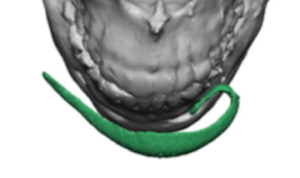
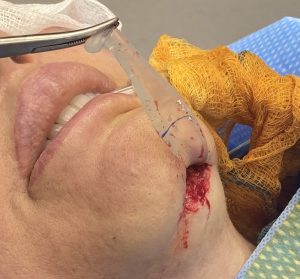
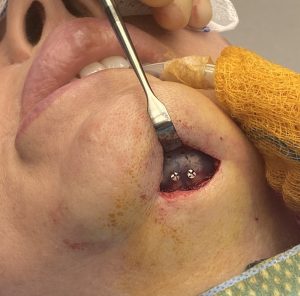
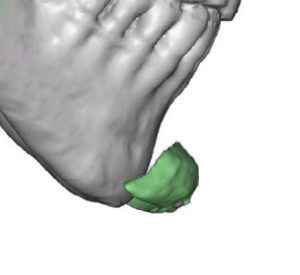
Like many implant features the one benefit can also be a disadvantage. Solid silicone chi. Implants are flexible which enables them to be inserted through small incisions. But much of a chin implant procedure is ‘blind’ and once the flexible implant is inside off the incision it is easy to see how the thin wings can bend and fold onto themselves. To avoid this problem, an adequate internal pocket is needed as well as an insertion method that ensures the most lateral aspect of the implant os fully unfolded and laying flat.
Case Highlights:
1) Extended chin implants have an increased potential for malposition due to the long length of their wings particularly when an existing smaller chin implant is being replaced.
2) Folding of the wings of a chin implant is common when it is placed too high where the mental nerve exists and can create a visible or palpable bulge in the vestibule of the affected side.
3) When modifying a larger chin implant to a smaller one double screw fixation is essential to prevent postoperative shifting of the implant in the larger pocket.
Dr. Barry Eppley
Indianapolis, Indiana

